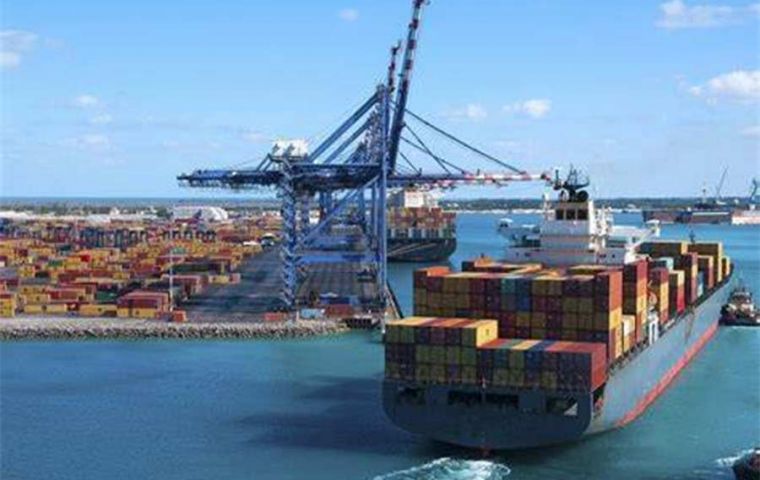MercoPress. South Atlantic News Agency
Latin American exports lose momentum in 2022 and 2023, report by IDB Bank
 The region’s external sales were driven by shipments to the United States, which are estimated to have grown by 21.3% in 2022
The region’s external sales were driven by shipments to the United States, which are estimated to have grown by 21.3% in 2022 Latin America and the Caribbean value of goods exported during 2022 rose at an estimated 18.8% rate, which represents a downward trend in the region's commerce figures of some 27,8% when comparing 2021 with 2022, according to a report from the Inter American Development Bank, IDB.
In effect the IDB points out that the 2022 export performance was mainly explained by higher prices, while volumes lost momentum.
The latest edition of Trade Trends Estimates: Latin America and the Caribbean indicates that in the coming months, the export growth rate is expected to slow further in response to the downward trend in commodity prices, the war in Ukraine, restrictive monetary policies to reduce inflation in leading economies and the slowdown in global growth.
”After the recovery in 2021, a series of global shocks have sent exports from Latin America and the Caribbean into a slowdown that will continue into 2023. Reversing this trend will be key to shoring up economic growth in the region,” said Paolo Giordano, Principal Economist at the IDB’s Integration and Trade Sector, who coordinated the publication.
The region’s external sales were driven by shipments to the United States, which are estimated to have grown by 21.3% in 2022. Demand from the rest of Latin America and the Caribbean’s major trading partners slowed dramatically compared to 2021. Sales grew by 2% to China, 14% to the European Union, and 25.6% to Latin America and the Caribbean.
In 2022, the prices of most commodities exported by Latin America and the Caribbean climbed. Between January and November 2022, the year-on-year prices of oil (43%), coffee (29.1%), soybeans (13%) and sugar (5.5%) all increased. In contrast, the prices of iron ore and copper fell by 28.9% and 4.9% year-on-year, respectively.
According to the report, the shock caused by the Russian invasion of Ukraine “further increased the prices of LAC’s main export commodities.” However, “in most countries, the uptrend changed direction in the middle of the year in response to slowing global demand, forecasts of low growth, and the appreciation of the US dollar.”
Exports are estimated to have grown by 18.2% in South America in 2022 after increasing by 36% in 2021. The upturn in commodity prices explained much of this performance, which benefited from the dynamism of intraregional trade and was particularly hard hit by the cooling of demand from China.
Exports from Mesoamerica increased by an estimated 18.8% year-on-year in 2022 after growing by 19.4% in 2021. Unlike the rest of the region, Mexico experienced a continuous increase in its export growth rate throughout the year due to the rise in volumes shipped to the United States. Although exports from Central America slowed significantly in 2022 in comparison with 2021 (26.6%), they nonetheless grew by 13.6%, boosted by demand from within the region and the United States.
Exports from the Caribbean rose by an estimated 38% in 2022 after growing by 44.4% in 2021. The United States accounted for most of the increase, followed by the European Union. Latin America and the Caribbean’s total imports increased at an estimated rate of 26.3% in 2022, after growing by 37.4% in 2021.
The report was prepared by the IDB’s Integration and Trade Sector and its Institute for the Integration of Latin America and the Caribbean (INTAL).




Top Comments
Disclaimer & comment rulesCommenting for this story is now closed.
If you have a Facebook account, become a fan and comment on our Facebook Page!